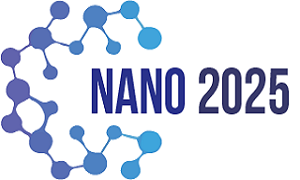2nd World Congress on
Nanotechnology
November 06-07, 2025 | London, UK
Address: Building A, Bath Road, Heathrow Boulevard, Sipson, West Drayton, UB7 0DU, United Kingdom
Nano 2025

Panjab University, India
Abstract:
Bimetallic fluorescent nanomaterials have garnered significant attention owing to their superior photoluminescent and catalytic activities. Herein, a novel glutathione-stabilized bimetallic AuIn nanoclusters framework was synthesized for the first time via a rapid one-pot microwave-assisted approach, with complete formation achieved within 2 minutes, along with monometallic Au nanoclusters (AuNCs) for comparison. The comprehensive characterization using UV-Vis and Fluorescence spectroscopy, HRTEM, DLS, XPS, FT-IR, EDX with mapping, TGA, and zeta potential analysis, which confirmed the formation of a uniformly spherical AuIn nanocluster framework with an average diameter of 125 nm and improved colloidal and thermal stability compared to only AuNCs. The photoluminescence studies revealed significantly enhanced emission for AuIn nanocluster framework relative to AuNCs. Further, the photocatalytic behavior of the novel AuIn nanocluster framework was evaluated based on two applications: the reduction of 4-nitrophenol and the degradation of toxic dyes, including both cationic and anionic dyes such as RhB, MB, MO, CR, and RB. The AuIn nanoclusters catalyzed the 4-NP reduction within 60 seconds, which is comparatively faster than AuNCs and exhibited superior dye degradation efficiency. The kinetic study confirmed that both processes pseudo pseudo-first-order kinetics. The fluorescent AuIn bimetallic nanocluster framework demonstrated enhanced photophysical and catalytic activity relative to monometallic AuNCs, demonstrating their potential as emerging platforms for advanced functional nanomaterials in future technological applications.
Biography:
Amit Bharti is a research scholar (Ph.D.) in the Department of Chemistry at Panjab University. His research focuses on the design and synthesis of advanced fluorescent metallic and carbon-based nanomaterials with potential applications in catalysis, sensing, and the biomedical field. He also works on the self-assembly of organic and biomolecules and has contributed as a co-author to published research in this area. His objective is to develop novel functional nanomaterials by integrating nanotechnology and supramolecular chemistry, with the goal of advancing the understanding and practical application of nanoscale materials to address complex environmental and technological challenges.
